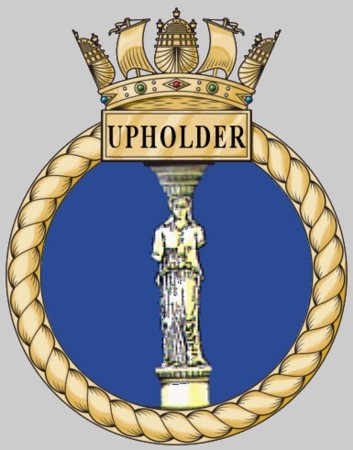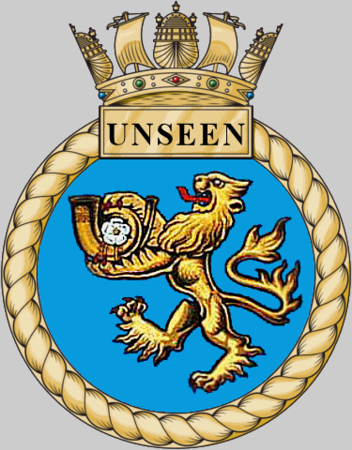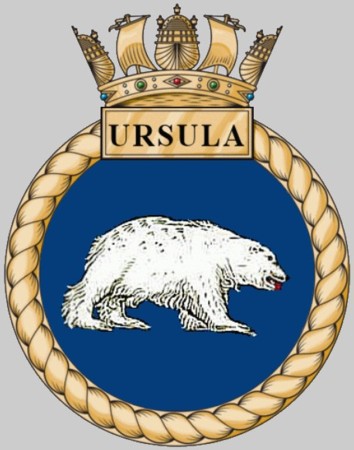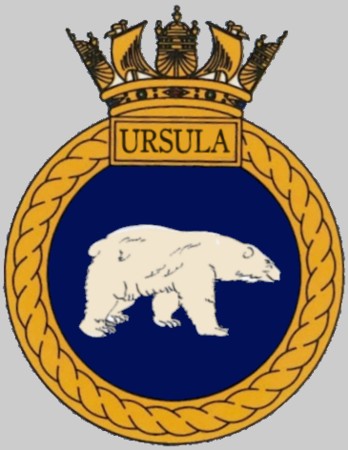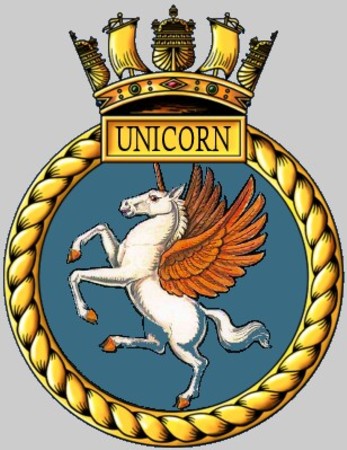 |
||||
|
HOME
|
US Navy -
ships
|
US Navy - air
units
|
USMC - air
units
|
International
Navies
|
Weapon Systems
|
Special Reports |
||||
|
United Kingdom - Royal Navy Upholder class Attack Submarine |
||||
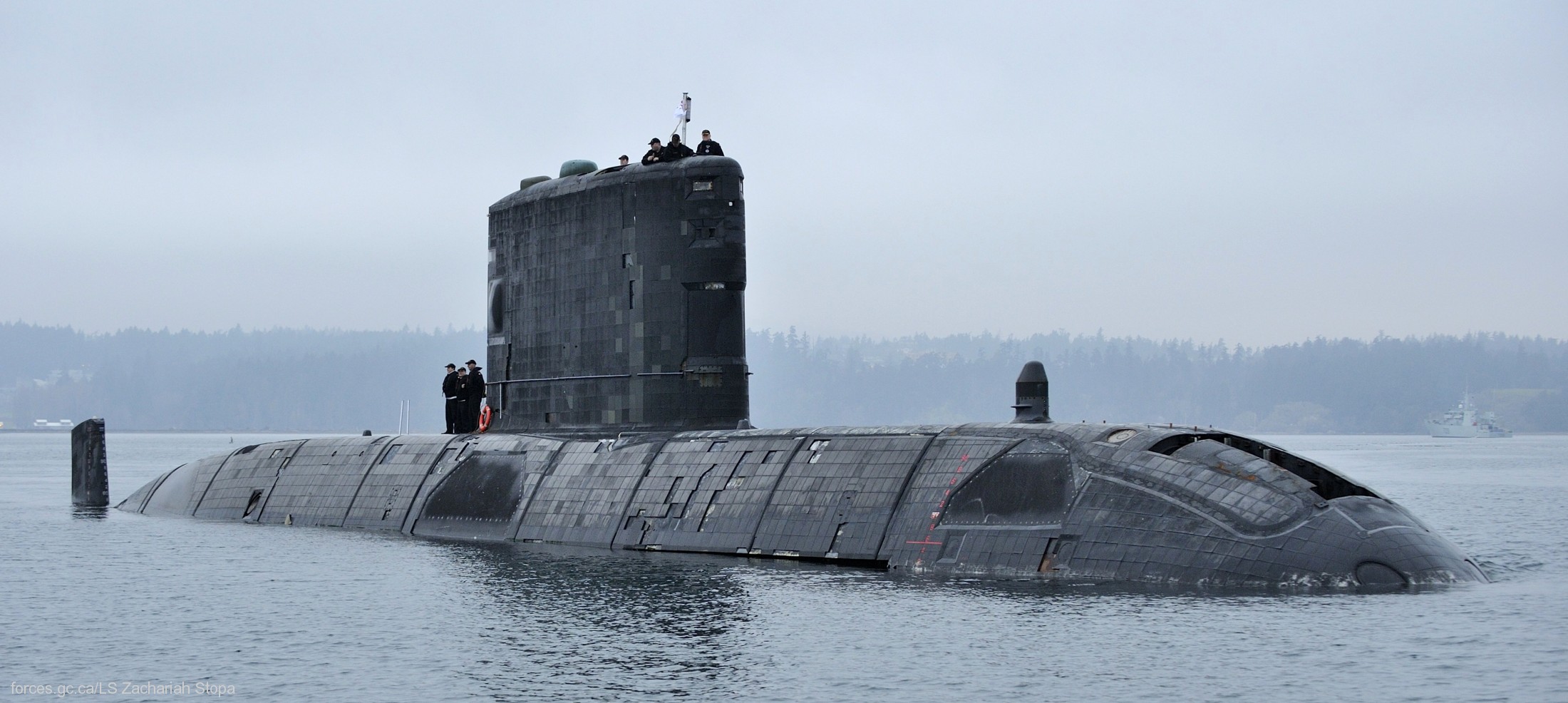 |
||||
| 01/23 | ||||
| Units: | ||||
|
S 40
HMS Upholder
(1990) S 41 HMS Unseen (1991) S 42 HMS Ursula (1992) S 43 HMS Unicorn (1993) |
||||
| Specifications: | ||||
|
Length:
70.26
meters (230.5 ft) Beam: 7.2 meters (24 ft) Draft: 7.6 meters (25 ft) Displacement: 2455 tons (submerged) Speed: 12 knots (22 km/h) surfaced / 20 knots (37 km/h) submerged Range: 8000 NM (15000 km) Complement: 48 Propulsion: Diesel-Electric 2 x Paxman Valenta 1600 RPA SZ diesel engines (2035 hp / 1.517 MW) 1 x GEC electric motor (5 MW) 1 shaft / 1 propeller Armament: 6 x 21 inches (533mm) torpedo tubes for Mark 24 Tigerfish heavy-weight torpedoes |
||||
|
The Upholder/Victoria-class submarines, also known as the Type 2400
(due to their displacement of 2,400 tonnes), are the class of the
diesel-electric submarines built in the United Kingdom in the 1980s
to supplement the nuclear submarines in the Submarine Service of the
British Royal Navy. The boats were originally named the Upholder class, after the most renowned vessel of the former U class. Their British service life was short, with the vessels being decommissioned in 1994. After an unsuccessful bid to transfer these submarines to the Pakistan Navy in 1993-1994, the Canadian government eventually purchased the submarines and a suite of trainers from the Royal Navy for Canadian Forces Maritime Command (renamed to Royal Canadian Navy in 2011) to replace their decommissioned Oberon-class submarines in 1998. In Canadian service, the submarines are classified as the Victoria class. These submarines initially suffered from serious electrical problems and were beset by mechanical operational incidents that limited their active service and the scope of their deployments. These problems have largely been overcome and the subs have achieved full operational capability. Design and development: In the late 1970s the United Kingdom Ministry of Defence (MoD) proposed a diesel-electric submarine design to replace the Oberon class. The new submarine class was intended to provide a more cost-effective alternative for training and in coastal defence. The announcement for the new design took place in September 1979. Five designs were put forward, with the MoD selecting the 1,960-ton design. However, the need for export potential upped the displacement limit to 2,400 tons to allow for flexibility in construction if the need for alternative machinery and systems arose. The Vickers Shipbuilding & Engineering Ltd. (VSEL) Type 2400 diesel-electric patrol submarine design was selected. The design displaces between 2,168 and 2,220 tons surfaced and 2,400–2,455 tons submerged. The submarines are 230 feet 7 inches (70.28 m) long overall with a beam of 25 feet (7.6 m) and a draught of 17 feet 8 inches (5.38 m). The submarines had a complement between 44 and 47 with the Royal Navy. The submarines have a single-skinned, teardrop-shaped hull constructed from NQ1 high tensile steel. The hull is fitted with elastomeric acoustic tiles to reduce the submarine's acoustic signature. The class has a reported dive depth of over 650 feet (200 m). Machinery The submarines are powered by a single-shaft diesel-electric system. They are equipped with two Paxman Valenta 1600 RPS SZ diesel engines, each driving a 1.4-megawatt (1,900 hp) GEC electric alternator. There are two 120-cell Chloride batteries. The batteries have a 90-hour endurance at 3 knots (5.6 km/h; 3.5 mph). The submarine is propelled by a 4.028-megawatt (5,402 hp) GEC dual armature electric motor turning a seven-blade fixed pitch propeller. This gives the vessels a maximum speed of 12 knots (22 km/h; 14 mph) on the surface and 20 knots (37 km/h; 23 mph) submerged. They have a diesel fuel capacity of 200 tons, giving a range of 8,000 nautical miles (15,000 km; 9,200 mi) at 8 knots (15 km/h; 9.2 mph) and 10,000 nautical miles (19,000 km; 12,000 mi) at snorting depth. Armament The class is equipped with six 21-inch (533 mm) torpedo tubes in the bow. In British service, the submarines were supplied with up to 18 Marconi Mk 24 Tigerfish Mod 2 torpedoes; they were also capable of using UGM-84 Sub-Harpoon missiles. They could also be adapted for use as a minelayer. The DCC Action Information Organisation and Fire Control System (AIS/FC), developed from the DCA/DCB systems in service at that time aboard Royal Navy nuclear-powered submarines, was based on two Ferranti FM1600E computers with a digital data bus linked to three dual-purpose consoles. Up to 35 targets could be tracked, and automatic guidance could be provided for four torpedoes against four separate targets. During the refit for Canadian service, the Sub-Harpoon and mine capabilities were removed and the submarines were equipped with the Lockheed Martin Librascope Submarine fire-control system (SFCS) to meet the operational requirements of the Canadian Navy. Components from the fire control system of the Oberon-class submarines were installed. This gave the submarines the ability to fire the Gould Mk.48 Mod.4 torpedo. This torpedo, operating at 40 knots (74 km/h), is deployed against targets over a range of 50 kilometres (31 mi). The torpedo range is 38 kilometres (24 mi) at speeds up to 55 knots (102 km/h). The type uses active and passive homing to approach the designated target. In 2014, the Government of Canada purchased 12 upgrade kits that will allow the submarines to fire the Mk 48 Mod 7AT torpedo. Sensors and countermeasures As built, the Upholder class was equipped with the Kelvin Hughes Type 1007 I-band radar for navigational purposes. The submarines were fitted with the Type 2040 Thompson Sintra ARGONAUTE hull mounted sonar, installed in the bow and Type 2026 GEC Avionics passive towed array. The submarines had the Type 2019 Thompson Sintra PARIS passive sonar for active and intercept purposes. They also had the Type 2041 passive ranging sonar and the Type 2004 expendable bathythermograph. The class was fitted with Type 2008 underwater telephone. The Type 2040 sonar was intended to be upgraded to Type 2075; however, that upgrade was cancelled in 1991. These systems were later upgraded with the installation of the BAE Type 2007 array and the Type 2046 towed array. The Canadian Towed Array Sonar (CANTASS) has been integrated into the towed sonar suite. The Upholder-class submarines were equipped with the CK035 electro-optical search periscope and the CH085 optronic attack periscope, originally supplied by Pilkington Optronics. After the Canadian refit, the submarines were equipped with Canadian communication equipment and electronic support measures (ESM). This included two SSE decoy launchers and the AR 900 ESM. Construction and Royal Navy service The plan initially called for twelve submarines to be built. However, formal approval was given in 1981 for the construction of only nine. The nine submarines were to be constructed in three stages, with Stage 1 being the construction of the prototype submarine, Stage 2 being the construction of three more follow-ons, and Stage 3 being the construction of five vessels with updated systems. The MoD placed the order with VSEL for the Stage 1 submarine on 2 November 1983. Upholder's keel was laid down at the VSEL shipyard at Barrow-in-Furness that month and the submarine was launched on 2 December 1986. The order for Stage 2 was placed on 2 January 1986 with the contract for the next three vessels going to Cammell Laird, a subsidiary of VSEL. The cost announced for the program was £620 million plus long-lead items. The second submarine, Unseen, was laid down at the Cammell Laird shipyard at Birkenhead on 12 August 1987 and launched on 14 November 1989. Ursula was laid down on 25 August 1987 and launched on 22 February 1991 and Unicorn was laid down on 13 March 1989 and launched on 16 April 1992. Upholder was completed on 9 June 1990, followed by Unseen on 20 July 1991, Ursula on 8 May 1992 and Unicorn on 25 June 1993. Initially they were unable to fire torpedoes and the first three were refitted in 1992 and 1993 to have this fixed at a cost of £9 million. They were operating from HMS Dolphin (at Gosport), but with only four submarines the base was deemed uneconomic and they transferred to Devonport Naval Base. In their short period of service, the class operated mostly in the Atlantic Ocean, the Mediterranean and UK waters. The exception was Unicorn, which completed a 6-month deployment east of Suez, completing operations and exercises in the Mediterranean, the Gulf of Oman and Indian Ocean and in the Persian Gulf. In 1992, the Defence Review announced the decision by the MoD to direct all further submarine expenditure to nuclear-powered submarines. In 1994, the Royal Navy abandoned the Type 2400 program after the first four submarines and Stage 3 was never ordered. The Upholder class were declared surplus in 1994 and laid up. Unseen was paid off on 6 April 1994, followed by Upholder on 29 April and Ursula on 16 June. These three submarines were laid up in June 1994. Unicorn was paid off on 16 October 1994 and laid up. Failed sale to Pakistan In 1992, the United Kingdom learned that the Pakistan had been in discussion and negotiation with France over the acquisition of submarines with Sharif administration giving a permission to the Pakistan Navy to acquire either diesel-electric-powered or the air-independent-powered submarines. The Pakistan Navy's research team, comprising three admirals, visited Sweden, China, France, and the United Kingdom. Original plans were to acquire the submarines from Sweden from the first team but the second team recommended the acquisition of either the British Upholders or the French Agosta class. During this time, Admiral S. M. Khan, the Chief of Naval Staff (CNS), had strongly suggested Upholder but the Bhutto administration had chosen the French technology over several political and technical reasons. Canadian acquisition Following the cancellation of the Canadian nuclear-powered submarine program, the Canadian navy sought to acquire conventionally-powered submarines again. The Canadian National Defence White Paper of 1994 stated the intent to explore the purchase of the Upholder class from the UK. The choice faced opposition and the price of $1 billion that the MoD demanded stalled the decision by the Cabinet of Canada to go ahead with the purchase. In the meantime, the subs were offered to Portugal and Chile. In 1996, another attempt to purchase the subs by Canada was stopped soon after starting. In the meantime, the UK spent millions maintaining the submarines. In April 1998, the Canadian government announced the potential acquisition of the Upholder class. The published cost was $750 million divided into two parts. $610 million was to be paid for the subs themselves and the remaining $140 million would cover related expenses. On 3 July 1998, the deal was ratified and two contracts were signed simultaneously. The first was an eight-year interest-free lease-to-purchase agreement for the four submarines, five training simulators and assorted training and data packages. The lease payments were part of a barter agreement for the continued access by the UK to Canadian Forces bases Wainwright, Suffield, and Goose Bay. The second contract was with VSEL for the refits required for the reactivation of the laid-up submarines. This included modifications for Canadian service, new batteries, a training program and all spare parts. Although the Canadian government touted the $750 million CAD procurement as a bargain, there have been arguments over the quality of the submarines with some suggestions that the purchase price will be at least spent again putting things right. Some Canadian opposition parties demanded that the British government fund any further costs, since it is widely believed that the submarines deteriorated while in storage and the Royal Navy was not completely forthcoming on their condition during the sale. However, Stephen Saunders, editor of Jane's Fighting Ships, argued that "there is not something inherently wrong with the class of submarines." In 2008, Babcock Canada was awarded the contract to support the Victoria class in Canadian service in the period up to 2023. The potential value of the contract was over CAD $3.6 billion and required establishing a supply chain in Canada to support and sustain the submarines. Every six to nine years each Victoria-class boat undergoes an extended docking work period (EDWP) involving comprehensive maintenance, repair, overhaul or upgrading of over 200 systems including sonar upgrades, mast upgrades and combat system upgrades. source: wikipedia |
||||
| Units: | ||||
|
||||
| images | ||||
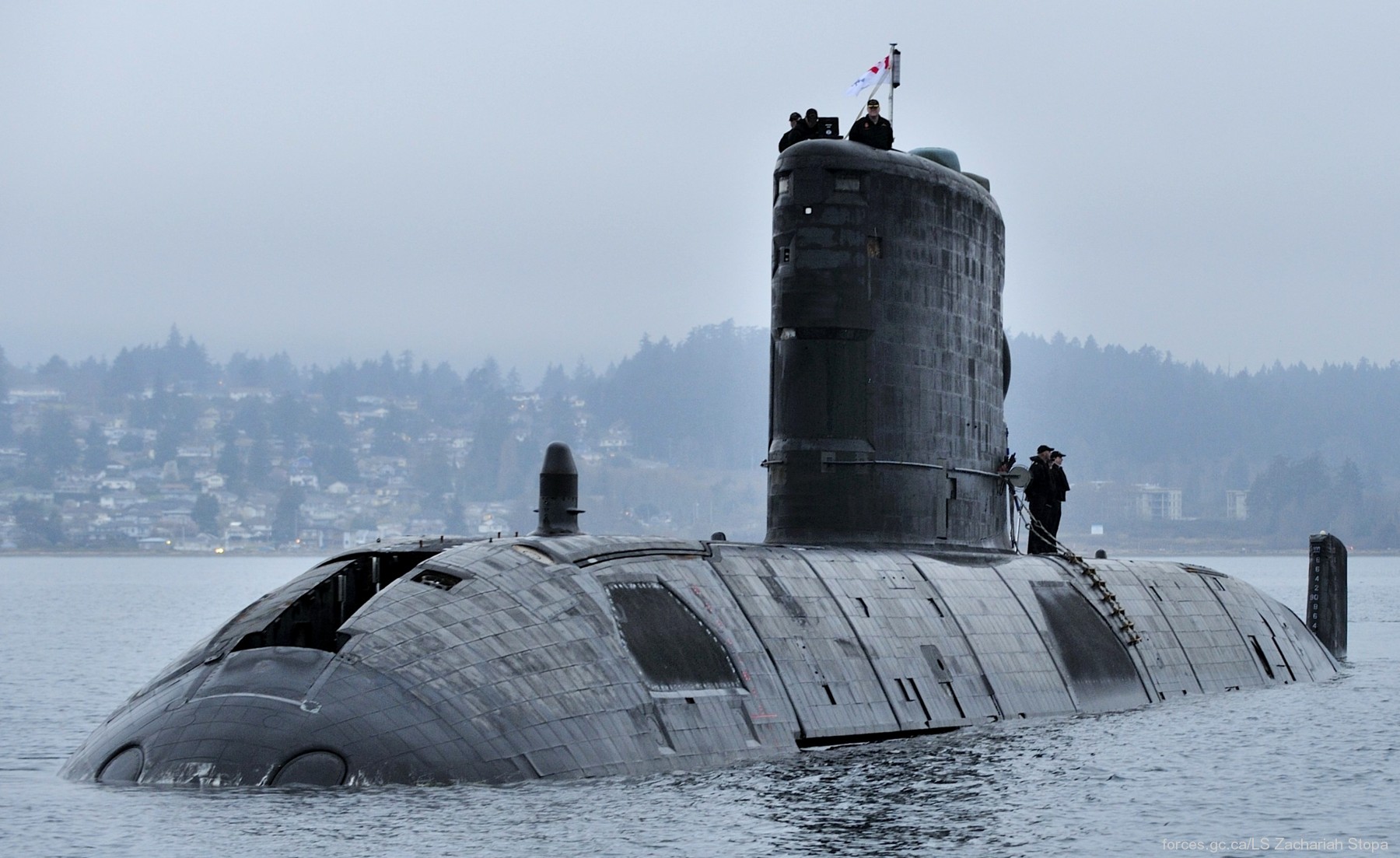 Upholder class SSK in Canadian Navy Service 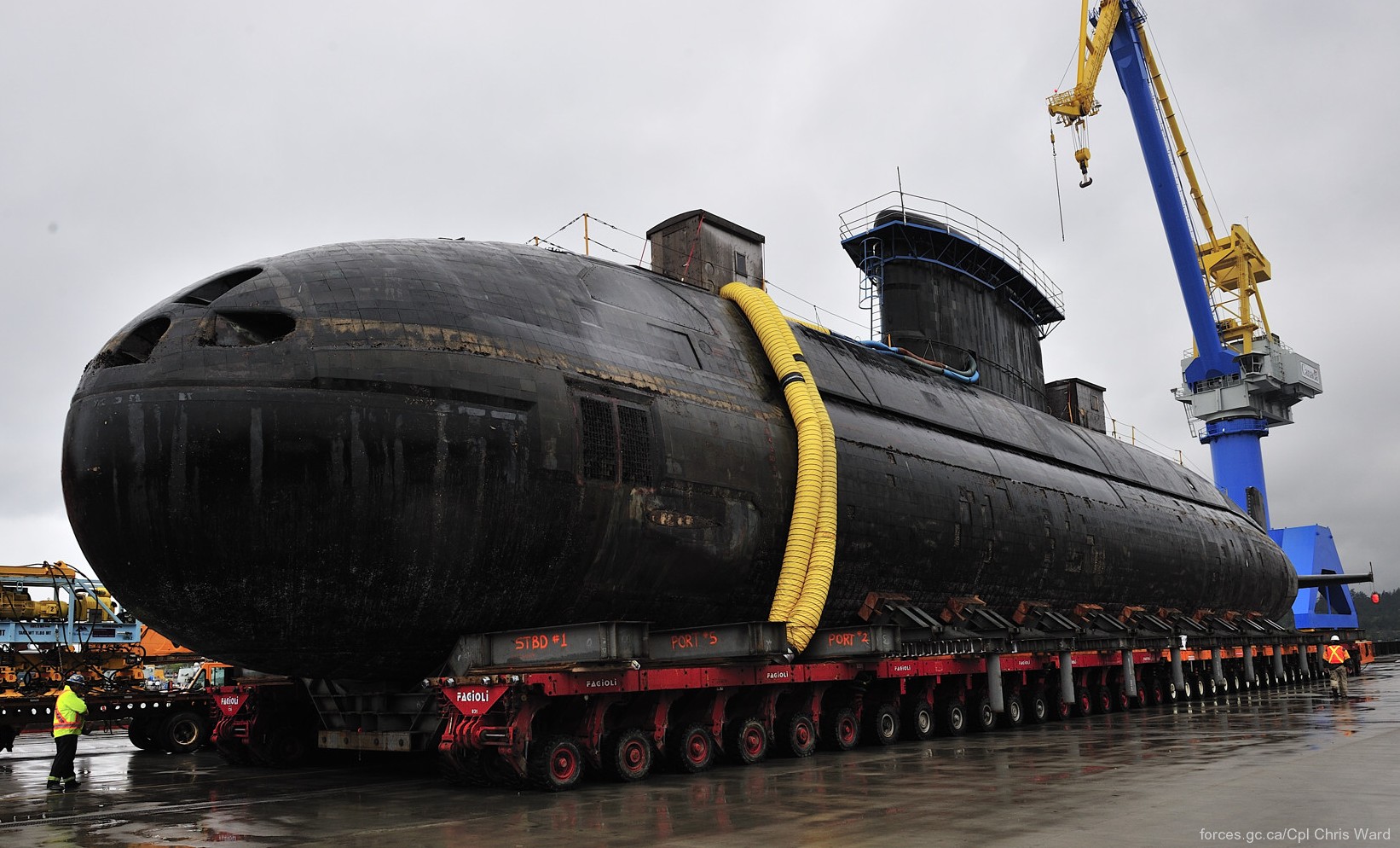 Upholder class SSK in Canadian Navy Service 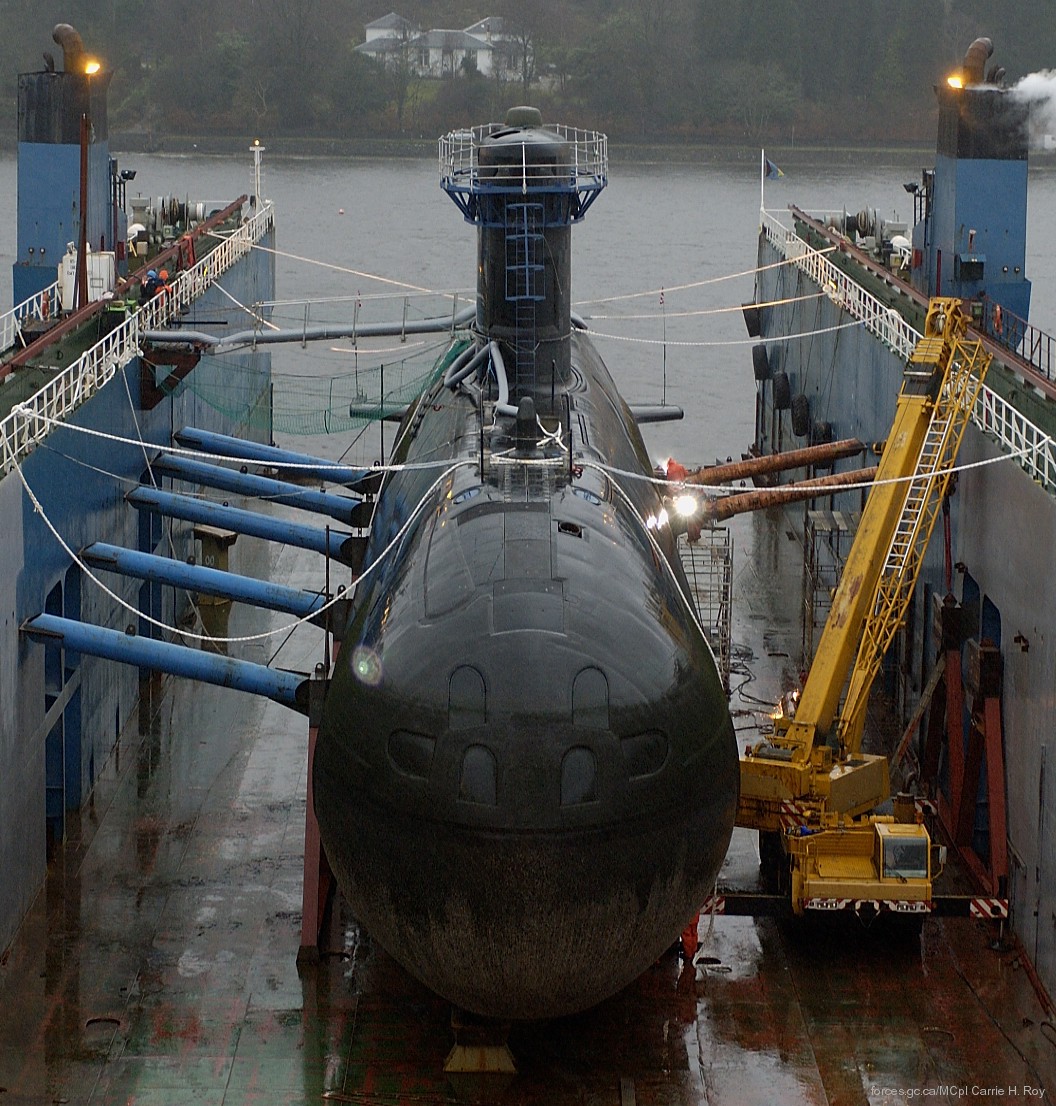 Upholder class SSK in Canadian Navy Service 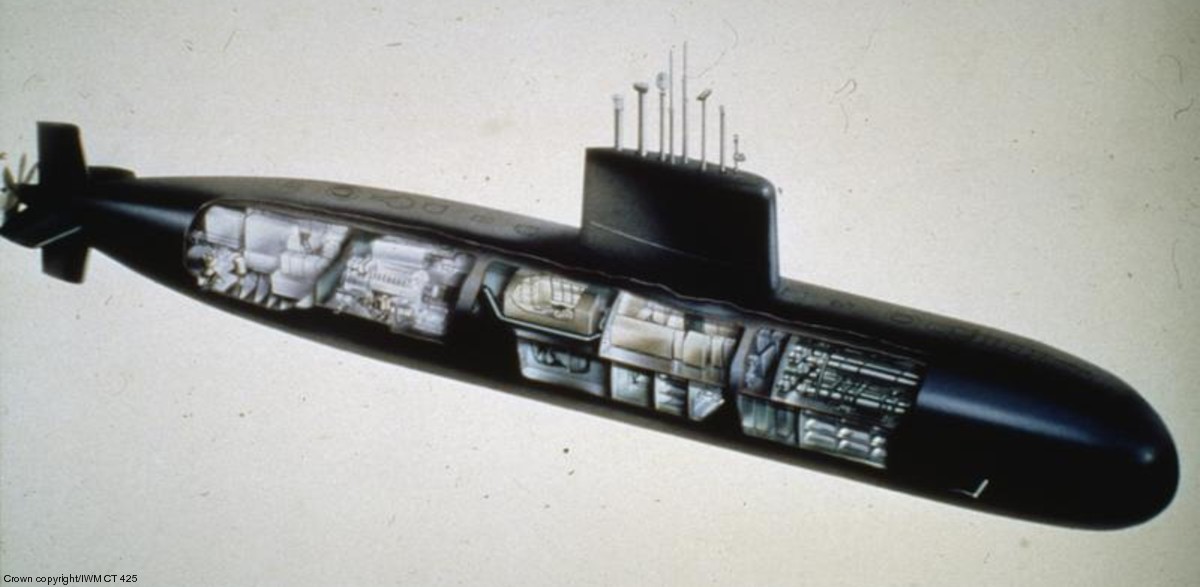 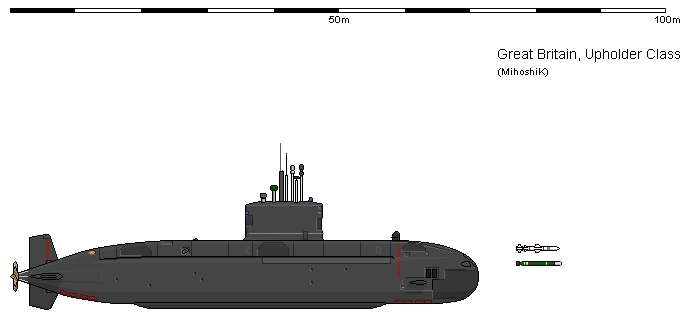 |
||||
|
|
seaforces.org
|
Royal
Navy start page
| |
